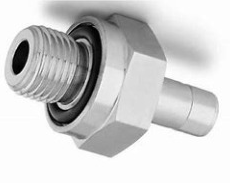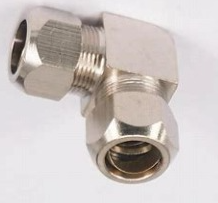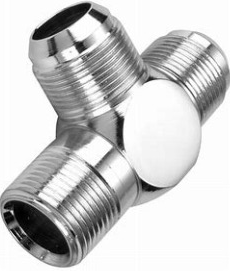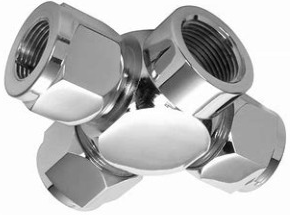Hydraulic systems are the backbone of many industrial applications. One key component ensuring their efficiency is the often-overlooked tube adapter fitting. In this guide, we’ll cover tube adapter fittings. We’ll explain the various types, offer installation tips, and discuss common challenges.
Types of Tube Adapter Fittings
1. Straight Adapters
Straight tube adapters provide a direct connection between two tubes. Ideal for linear configurations. These fittings are a go-to for maintaining a streamlined fluid path.
2. Elbow Adapters
When a change in direction is needed, elbow adapters come to the rescue. Their angled design allows for efficient redirection of fluid flow. It is perfect for navigating tight spaces.
3. Tee Adapters
Tee adapters help hydraulic lines branch. They enable a single tube to split in two directions. This type is pivotal for systems requiring distribution.
4. Cross Adapters
For complex hydraulic setups, cross adapters provide four connection points. This design is advantageous when multiple fluid paths converge or diverge.
Advantages of Tube Adapter Fittings
Here are the advantages of tube adapter fittings:
A. Seamless Integration
Tube adapter fittings seamlessly integrate into hydraulic systems. They ensure a smooth and efficient transfer of fluids. Their design minimizes disruptions, contributing to the overall reliability of the system.
B. Versatility Across Industries
From automotive to manufacturing, tube adapter fittings find applications in various industries. Their versatility makes them indispensable for fluid systems, adapting to diverse operational needs.
Materials and Construction
A. Common Materials Used
1. Steel
Steel tube adapter fittings offer robustness and durability. Commonly used in heavy-duty applications, they withstand high pressure and provide long-lasting performance.
2. Stainless Steel
For corrosion resistance, especially in challenging environments, stainless steel tube adapter fittings excel. They are ideal for applications where exposure to moisture or chemicals is a concern.
3. Brass
Brass tube adapter fittings strike a balance between strength and corrosion resistance. They are used in less harsh environments. Durability and cost-effectiveness are essential there.
B. Impact of Material on Performance
Understanding the impact of materials on performance is crucial. The right material ensures longevity and optimal functioning in specific operational conditions.
Selecting the Right Tube Adapter Fitting
When selecting the right tube adapter fittings, consider these factors:
1. Pressure Rating
Selecting tube adapter fittings with an appropriate pressure rating is paramount. Matching the fittings to the system’s pressure requirements guarantees safety and efficiency.
2. Temperature Compatibility
Consider the temperature conditions your hydraulic system will face. Choosing fittings that withstand the operational temperature range prevents malfunctions and enhances longevity.
3. Material Compatibility
Make sure the material of the tube adapter fittings is compatible with the fluid being transferred. Incompatibility can lead to corrosion or degradation. This impacts both the fittings and the fluid.
4. Thread Type
Selecting the right thread type is essential for a secure connection. Whether it’s NPT, BSP, or metric threads, compatibility ensures a tight and leak-free fit.
Installation Tips and Techniques
Follow these installation tips and techniques to ensure smooth operation:
A. Proper Lubrication
Applying the right lubricant simplifies installation and ensures a secure fit. Lubrication reduces friction during assembly, preventing damage to threads and ensuring proper tightening.
B. Tightening Guidelines
Adhering to manufacturer-recommended torque values is crucial. Over-tightening can damage threads, while under-tightening may lead to leaks. A torque wrench is a valuable tool for precision.
C. Ensuring a Leak-Free Connection
Properly installed tube adapter fittings should provide a leak-free connection. Regular inspections and testing can identify and address potential leaks. They can do this before the leaks compromise the hydraulic system’s performance.
Common Challenges and Solutions
A. Thread Mismatch Issues
Thread mismatch can hinder the installation process. Double-checking thread types and using appropriate adapters resolve this common challenge.
B. Corrosion Concerns
In corrosive environments, choose corrosion-resistant materials, such as stainless steel or brass. This mitigates the risk. Regular maintenance also plays a vital role in preventing corrosion-related issues.
C. Addressing Seal Failures
Seal failures can occur due to improper installation or wear over time. Replacing damaged seals and ensuring correct installation techniques resolve seal-related challenges.
Conclusion
Tube adapter fittings are the unsung heroes of hydraulic systems. They simplify connections and ensure seamless fluid transfer. Understand the types, advantages, and best practices for installation. This empowers you to optimize your hydraulic setup. Embrace the reliability and efficiency of tube adapter fittings. They bring these benefits to your industrial applications.
Post time: Feb-16-2024





